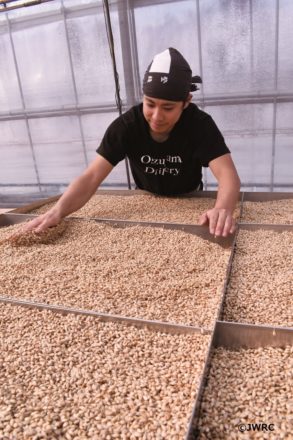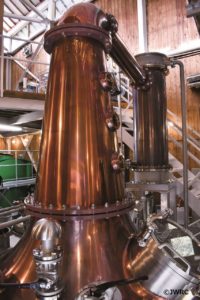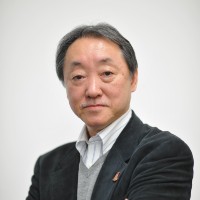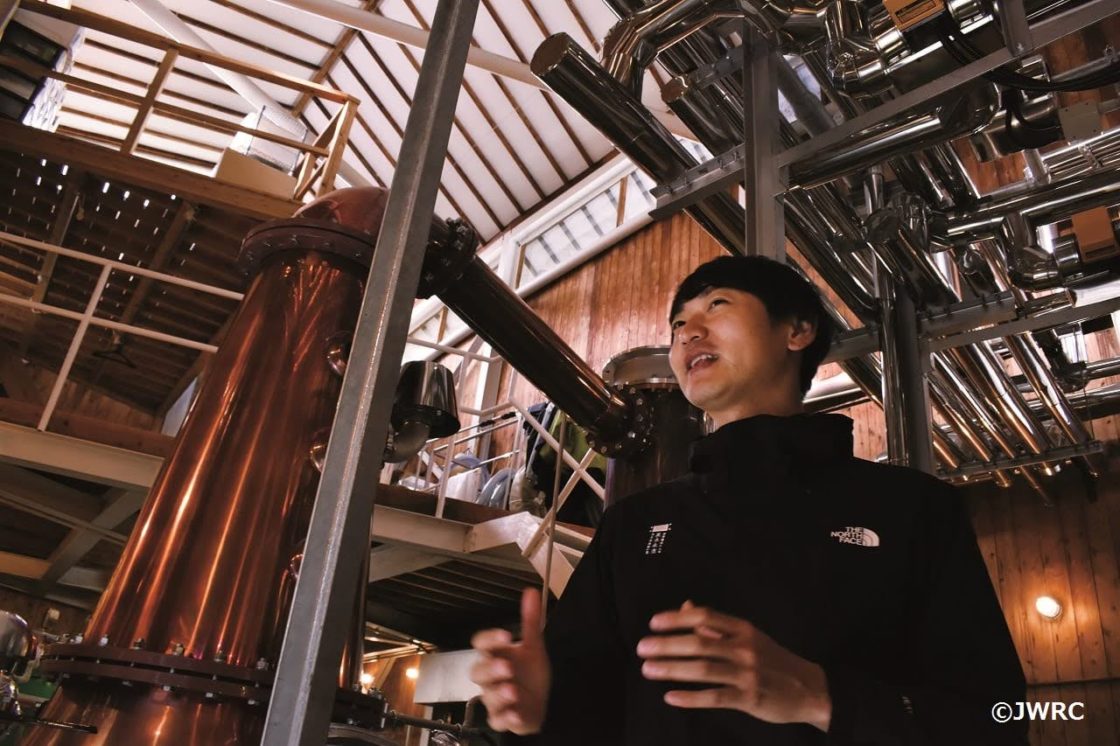It’s more than two hours away from Miyazaki Airport by car and train.
Deep in the foothills of Mt. Osuzu is Kuroki Honten’s shochu distillery, where the company began making whisky on November 1, 2019. November 1st is “Shochu Day.”
What kind of whisky is being made right alongside shochus like “Yamasemi” and “Yamaneko.” For the first time in 17 years, I visited Osuzuyama in mid-January.
Text/Photos: Mamoru Tsuchiya
Translation: Whiskey Richard
This article originally appeared in Japanese in Whisky Galore Vol.19 / April 2020.
Barley farming and malting all done in-house
Kuroki Honten is Miyazaki prefecture’s historical shochu maker in Takanabe, known for the “Hyakunen no Kodoku” barley shochu. This brand of shochu was famously the choice tipple of then-Crown Prince Naruhito, today’s Emperor of Japan.I visited when I heard that Kuroki Honten built a small distillery in the mountainous area of Mt Osuzu. That was back in 2003. The company president at the time was Toshiyuki Kuroki, a Scotch fan, who visited several Scotch distilleries. He specifically liked Edradour, and when he began thinking of whether or not it would be possible to make a shochu distillery like Edradour, he was apparently thinking of Osuzuyama. When I heard that Osuzuyama finally began making whisky, I took my first trip down to Miyazaki in 17 years.
I am met by his son, Shinsaku Kuroki, at Takanabe station. He’s a young man of over 180cm, and when asked about his father, he says that his old man is now the mayor of Takanabe, and he has left the entire alcohol operation in the hands of his sons.
Our first stop is one of the three corporations that Kuroki Honten manages, named “Reviving the Land.” It’s a farming corporation which grows raw ingredients for shochu and whisky such as grain and sweet potatoes, as well as vegetables and more. They have some 42 hectares of land. 19 hectares of that is currently devoted to growing barley — whisky’s main ingredient.
“We’re currently growing ‘Harushizuku’ and ‘Haruka Two-Row’ barley. Our entire supply of barley comes from our own farm.”

When I asked about what they do about malting, he says that they handle that in-house as well.
“The harvested barley is germinated in a plastic container, then moved to these stainless vats in this greenhouse for malting. As a farming corporation, malting is our forte.”
600 kilograms of barley are malted at a time, after being manually spread across 48 vats. Kuroki-san laughs as he says “this is box malting,” not floor malting, but the very idea is quite innovative. If you think it through, this operation is similar to the process used to make koji in sake or shochu. It’s unlikely that anyone has thought of this up until now.
Making whisky representative of the local area

Even the drying is interesting. Using two dryers normally used for dehydrating shiitake, each vat is dried using hot air. Our next stop was the Osuzuyama Distillery–about a 40 minute drive away–and on the ride over there were plenty more surprises in our discussion.
Osuzuyama currently uses 800kg of malt for one batch. Milling is done with a four-roller mill, yielding a 3:5:2 ratio of husks, grits, and flour, again varying from the norm. Miyake made the mash tun, which yields 4000L of wort in one batch. Pinnacle’s dry yeast is used, though they will be working with more yeasts going forward. But what really sets Osuzuyama Distillery apart from others, besides the malting, is their stills and the distillation process they are using.
I remember from my last visit that they had a single still for shochu. But this time around they have two shochu stills made from stainless steel, as well as two copper stills from Miyake. One of these is 400L, used for gin and spirits. The other one is 3000L and used for whisky. A whisky still, in other words. The first distillation is done in the shochu still, and only the second distillation happens in the copper whisky still. That shochu still is a hybrid, able to blow steam directly into the wash (a.k.a. steam injection), and also heat it indirectly using steam. This yields 2000L of low wine, which is subsequently moved to the Miyake still for the spirit run.

Mamoru Tsuchiya is Japan’s foremost whisky critic. He is the Representative Director of the Japan Whisky Research Centre, and was named one of the “World’s Best Five Whisky Writers” by Highland Distillers in 1998. He served as the whisky historian for NHK’s Massan and he has published several books such as The Complete Guide to Single Malt Whisky, Taketsuru’s Life and Whisky, and The Literacy of Whisky. He is the editor of the bimonthly Whisky Galore, Japan’s only print whisky magazine.




One Comment